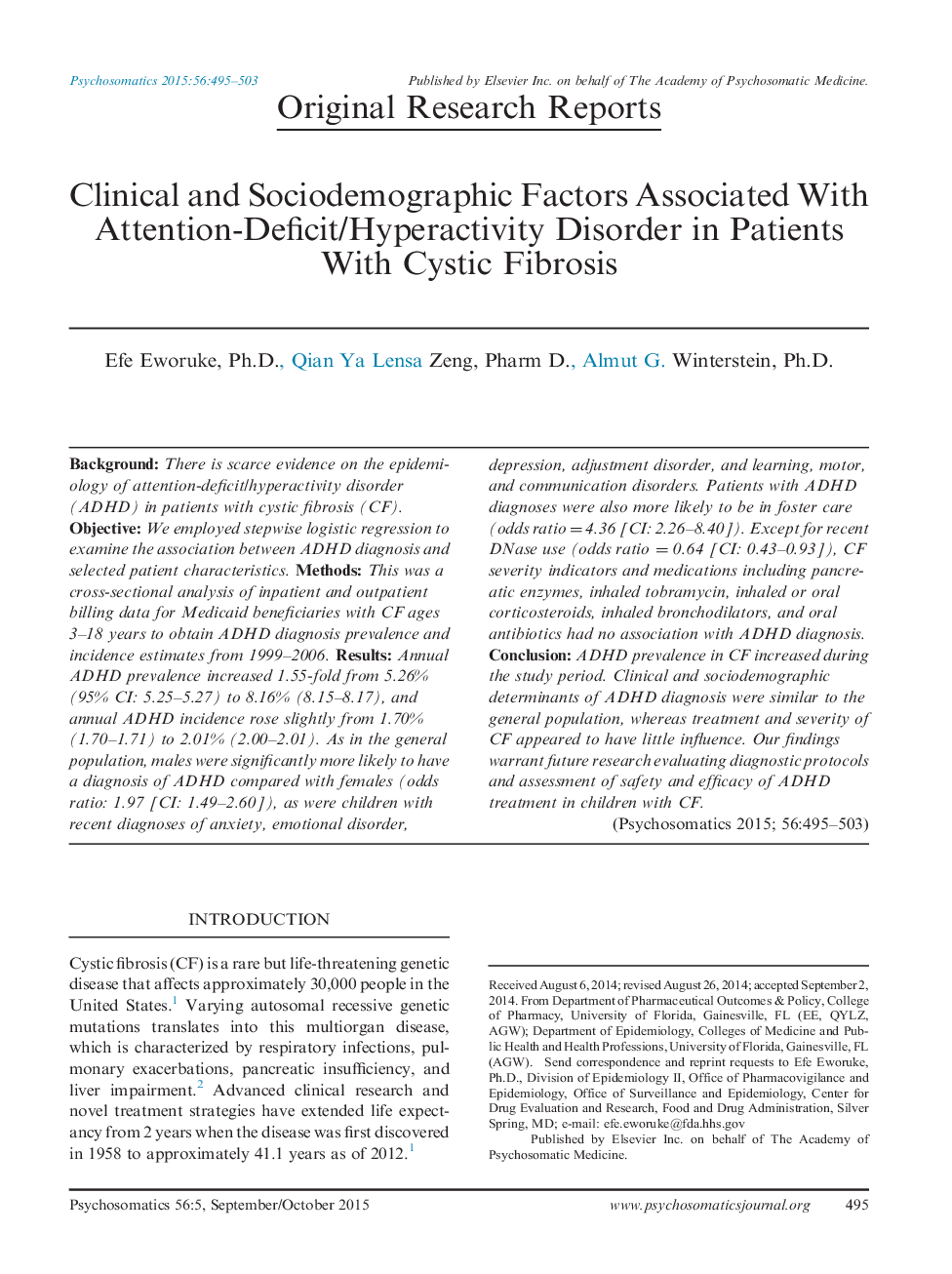| Article ID | Journal | Published Year | Pages | File Type |
|---|---|---|---|---|
| 337751 | Psychosomatics | 2015 | 9 Pages |
BackgroundThere is scarce evidence on the epidemiology of attention-deficit/hyperactivity disorder (ADHD) in patients with cystic fibrosis (CF).ObjectiveWe employed stepwise logistic regression to examine the association between ADHD diagnosis and selected patient characteristics.MethodsThis was a cross-sectional analysis of inpatient and outpatient billing data for Medicaid beneficiaries with CF ages 3–18 years to obtain ADHD diagnosis prevalence and incidence estimates from 1999–2006.ResultsAnnual ADHD prevalence increased 1.55-fold from 5.26% (95% CI: 5.25–5.27) to 8.16% (8.15–8.17), and annual ADHD incidence rose slightly from 1.70% (1.70–1.71) to 2.01% (2.00–2.01). As in the general population, males were significantly more likely to have a diagnosis of ADHD compared with females (odds ratio: 1.97 [CI: 1.49–2.60]), as were children with recent diagnoses of anxiety, emotional disorder, depression, adjustment disorder, and learning, motor, and communication disorders. Patients with ADHD diagnoses were also more likely to be in foster care (odds ratio = 4.36 [CI: 2.26–8.40]). Except for recent DNase use (odds ratio = 0.64 [CI: 0.43–0.93]), CF severity indicators and medications including pancreatic enzymes, inhaled tobramycin, inhaled or oral corticosteroids, inhaled bronchodilators, and oral antibiotics had no association with ADHD diagnosis.ConclusionADHD prevalence in CF increased during the study period. Clinical and sociodemographic determinants of ADHD diagnosis were similar to the general population, whereas treatment and severity of CF appeared to have little influence. Our findings warrant future research evaluating diagnostic protocols and assessment of safety and efficacy of ADHD treatment in children with CF.
